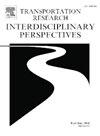Case study on SAF emissions from air travel considering emissions modeling impact
IF 3.9
Q2 TRANSPORTATION
Transportation Research Interdisciplinary Perspectives
Pub Date : 2025-01-01
DOI:10.1016/j.trip.2025.101341
引用次数: 0
Abstract
The environmental impact of air travel, largely driven by fossil-fuel consumption, remains a critical subject of debate. Addressing this challenge requires immediately adopting sustainable practices to mitigate its environmental footprint. While hydrogen and hybrid-electric propulsion technologies show promise for the future, current efforts focus on Sustainable Aviation Fuels (SAF) as a viable near-term solution to reduce aviation emissions while ensuring compatibility with existing aviation infrastructure. This paper examines the environmental impact of air travel, focusing on the emissions associated with conventional fuel and SAF. Using two methodologies, namely the subsonic fuel flow method (SF2) and an improved version of it, the emissions corrected subsonic fuel flow method (EC-SF2), non-CO2 emissions trends are analyzed along a flight trajectory from Stockholm to Bordeaux. The comparison between the two methods underscores the importance of accurate emission modeling, particularly for SAF correction on emission index. The SF2 method reveals that SAF fuels with higher calorific value than conventional fuel increased total HC and CO emissions while decreasing NOx emissions. Conversely, the EC-SF2 method resulted in a more homogeneous emissions reduction trend. Our proposed methodology, which corrects both fuel flow and emission index based on SAF-specific data, could, therefore, offer a more reliable estimation of emissions behavior for SAF. These findings highlight the sensitivity of emissions modeling on environmental assessment.
求助全文
约1分钟内获得全文
求助全文
来源期刊

Transportation Research Interdisciplinary Perspectives
Engineering-Automotive Engineering
CiteScore
12.90
自引率
0.00%
发文量
185
审稿时长
22 weeks
 求助内容:
求助内容: 应助结果提醒方式:
应助结果提醒方式:


